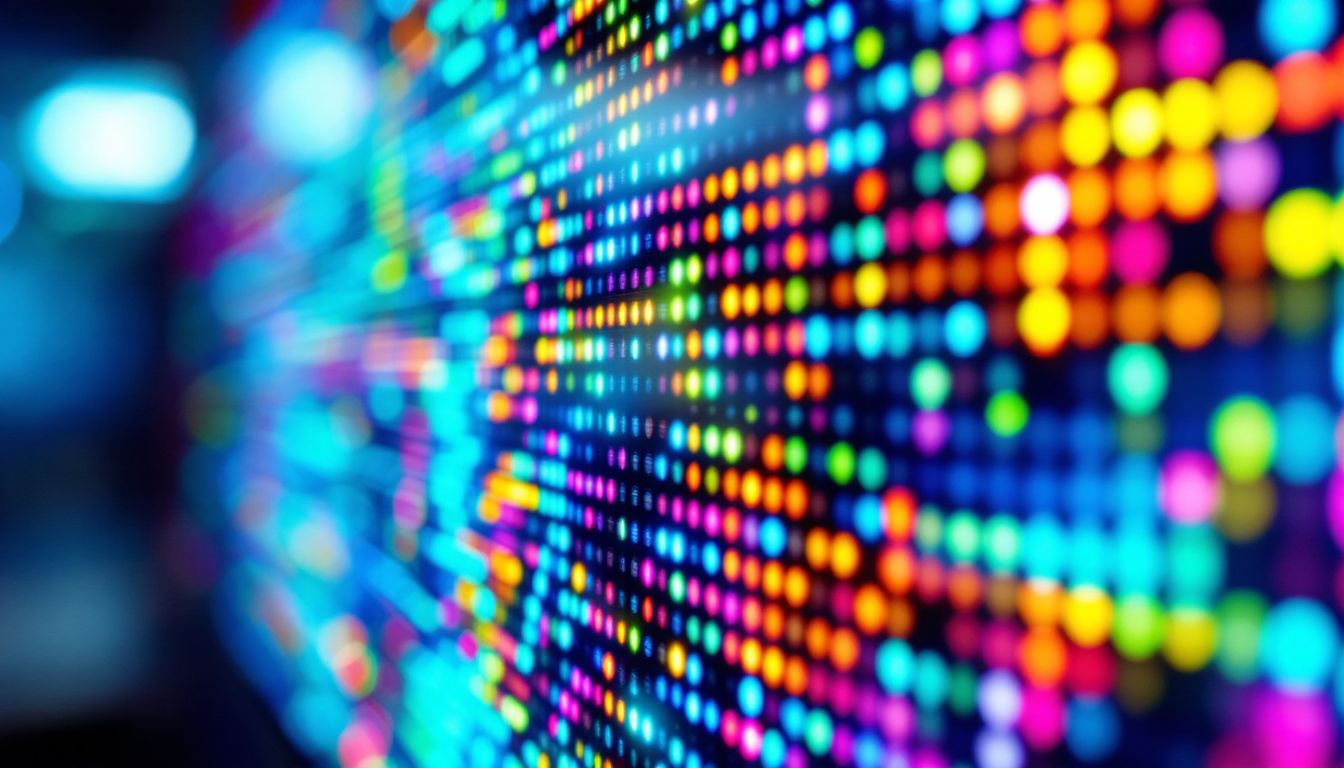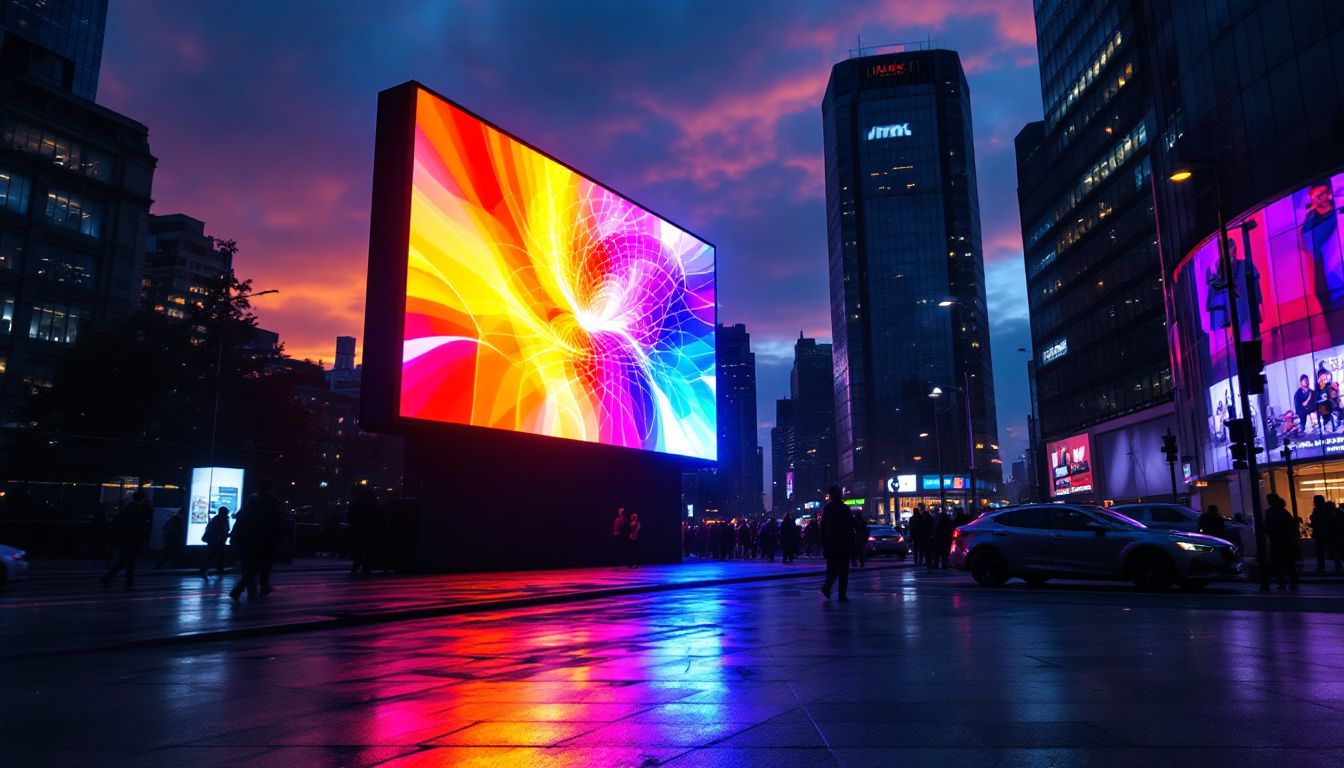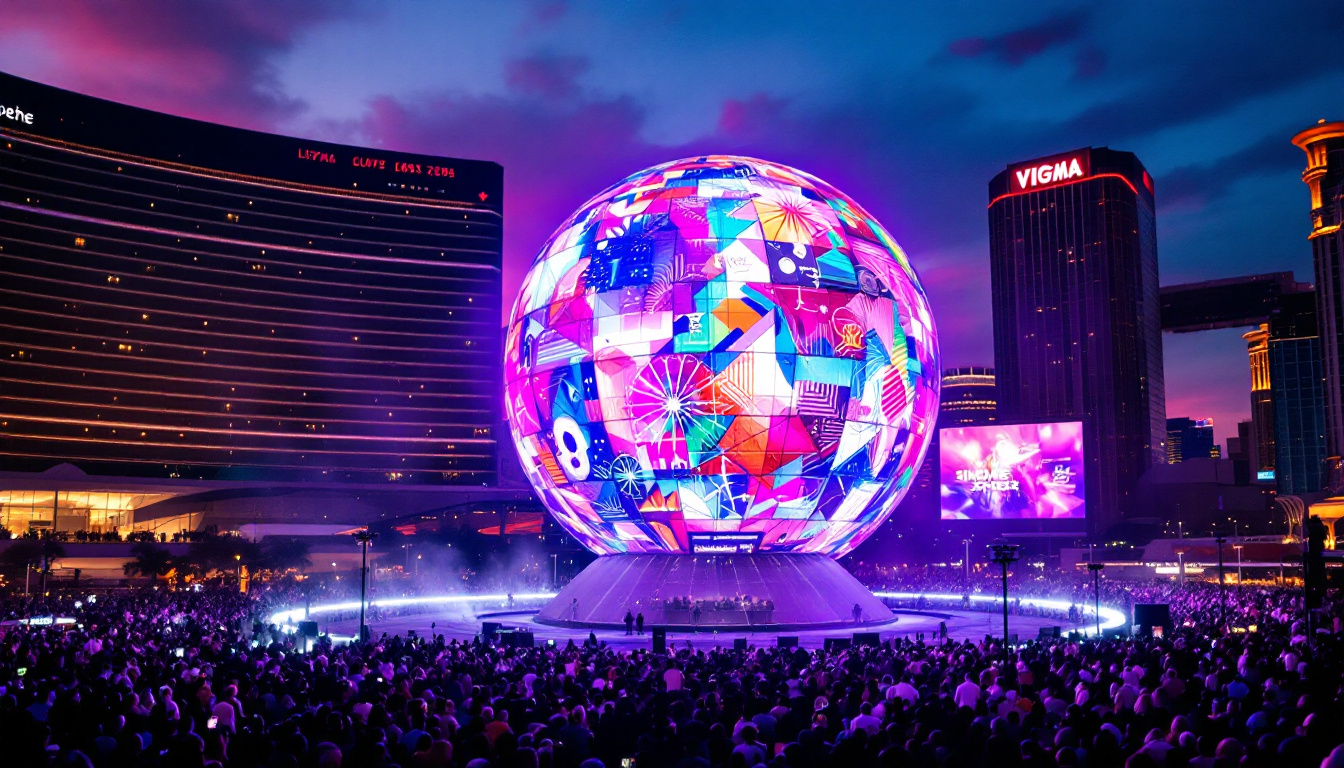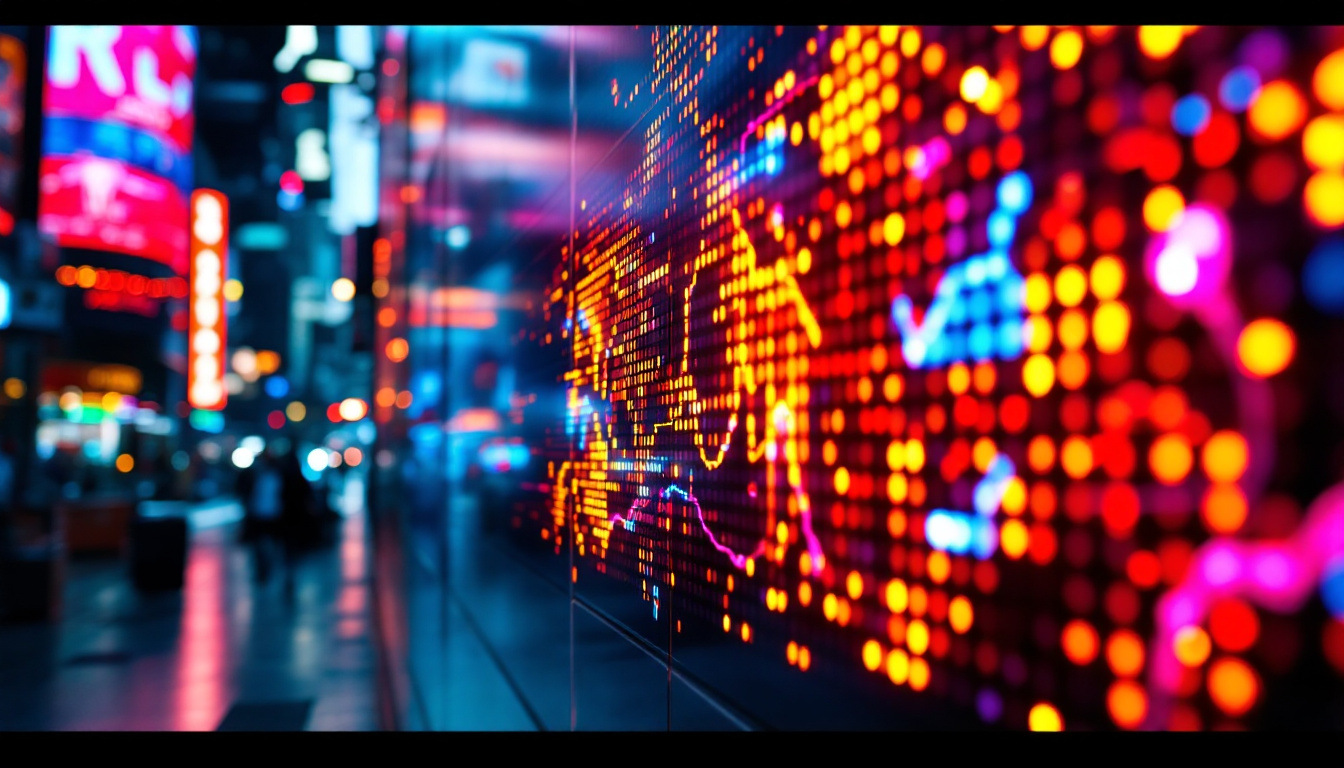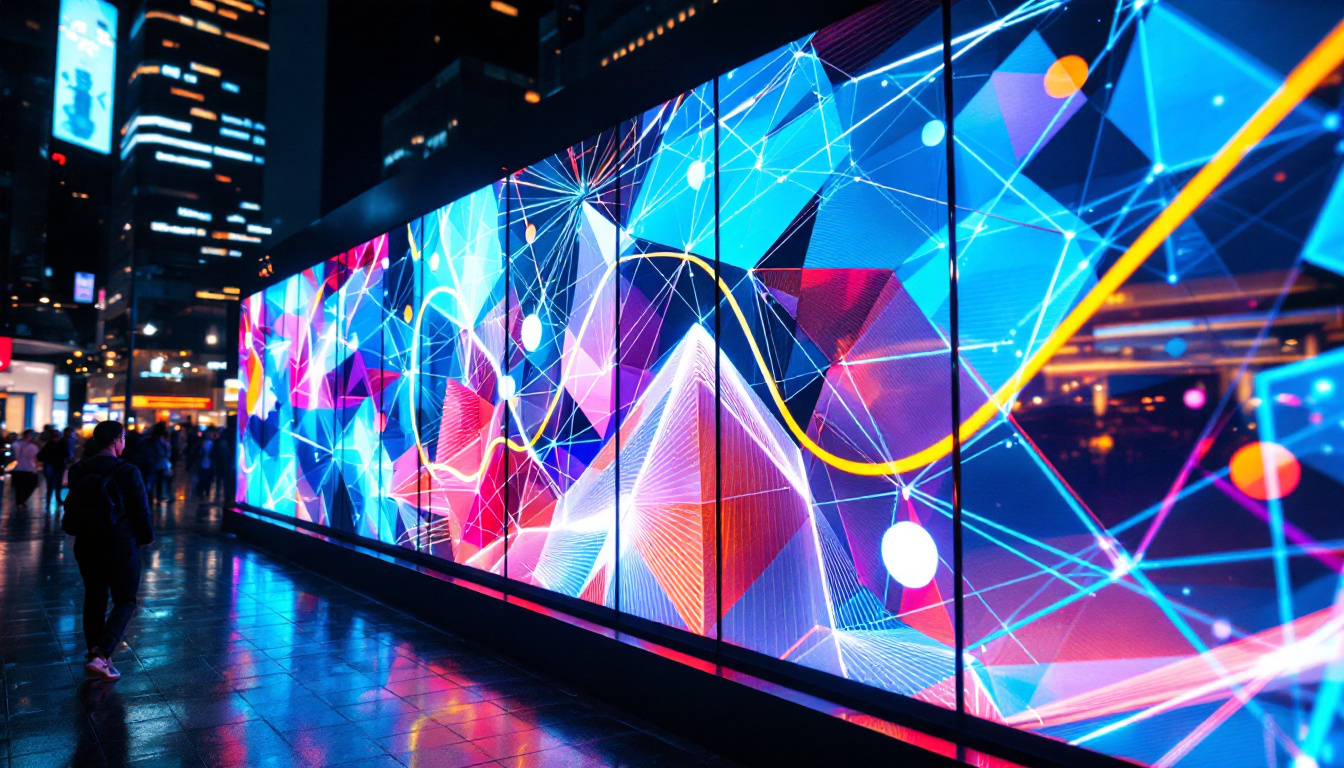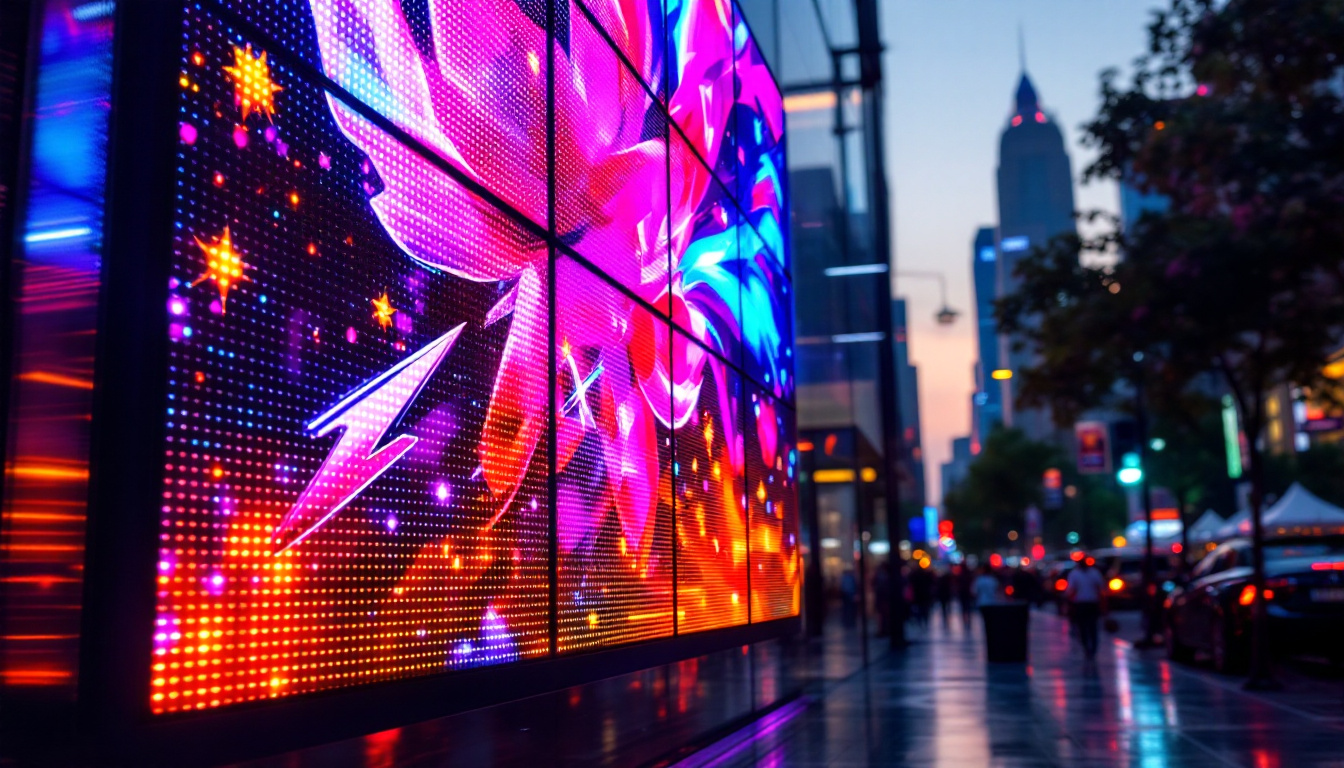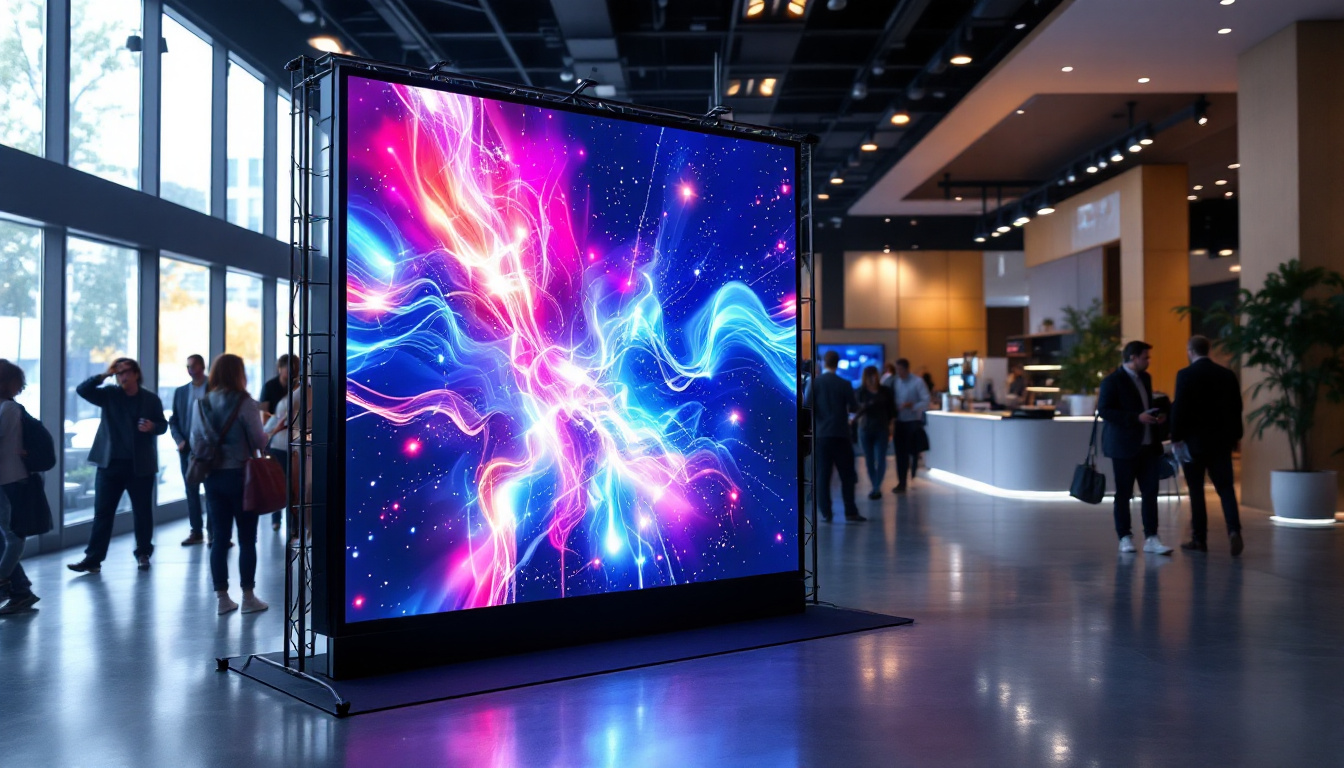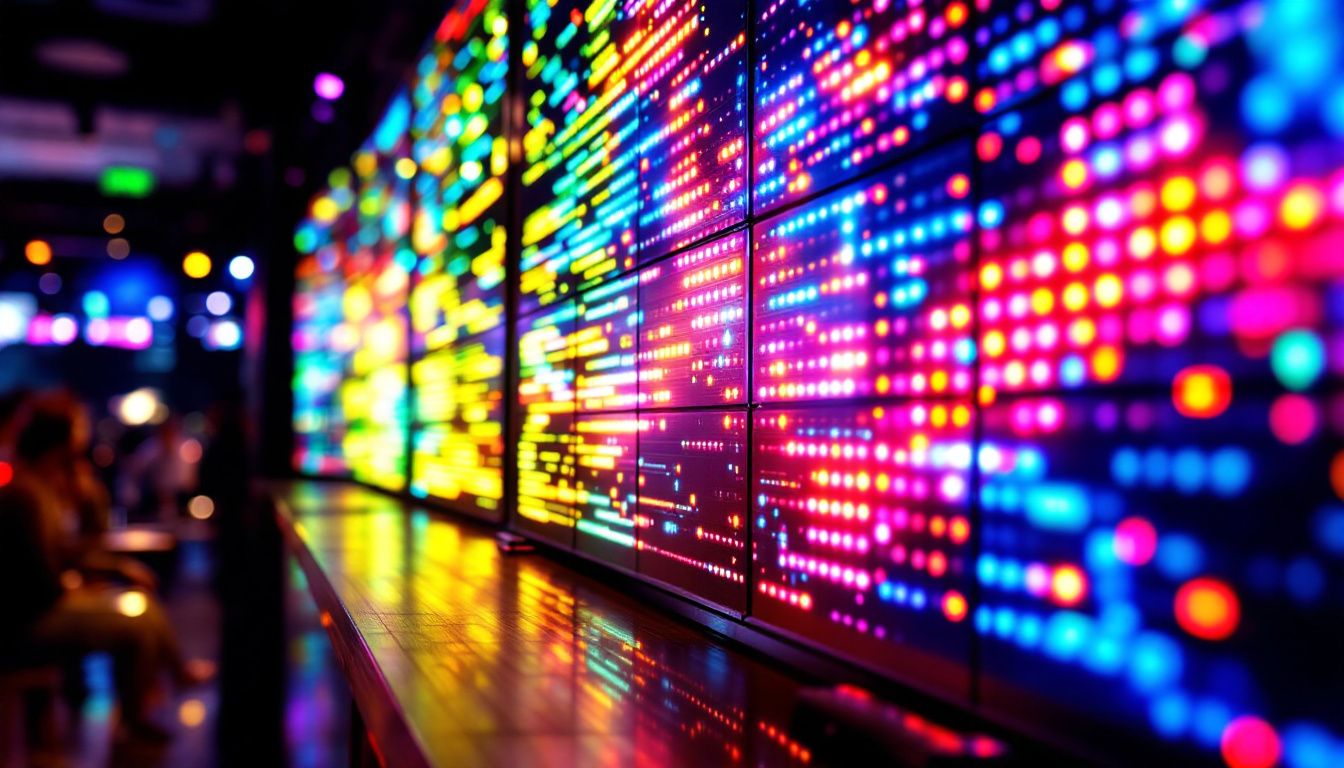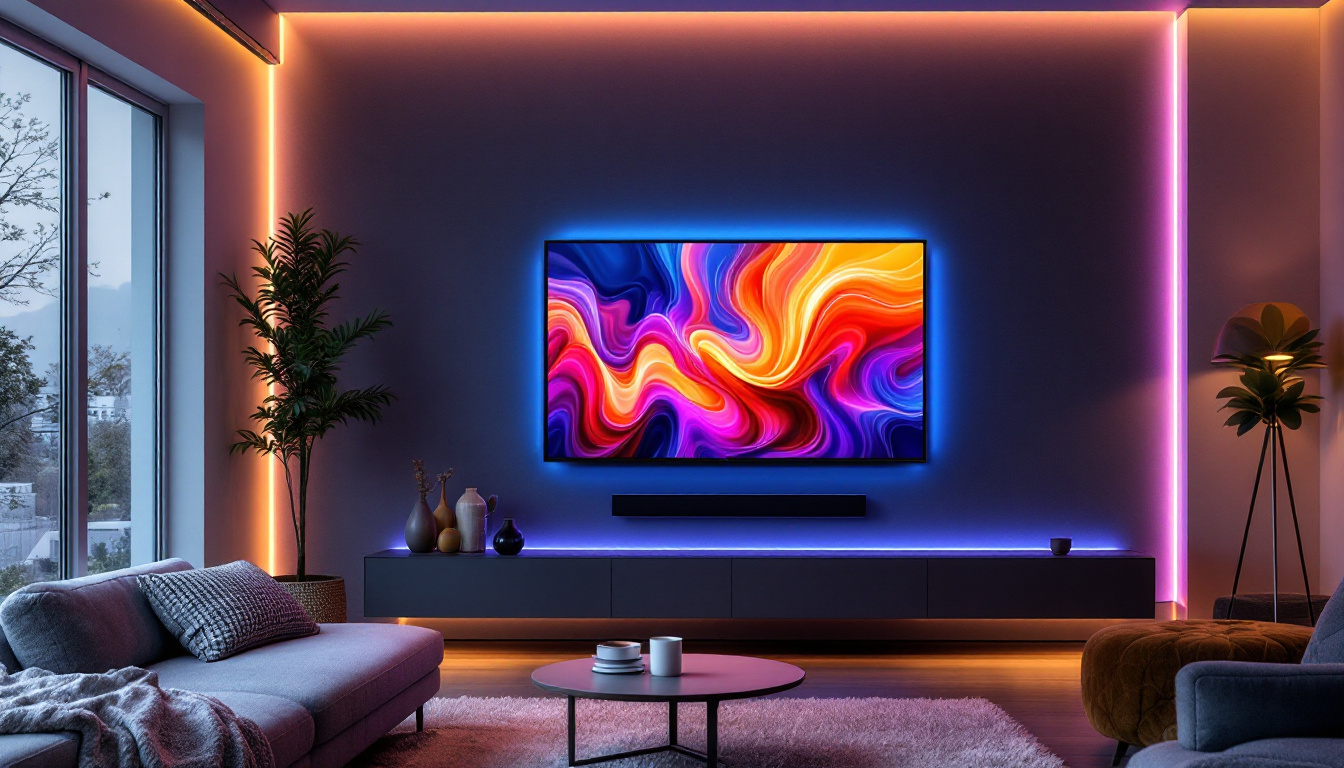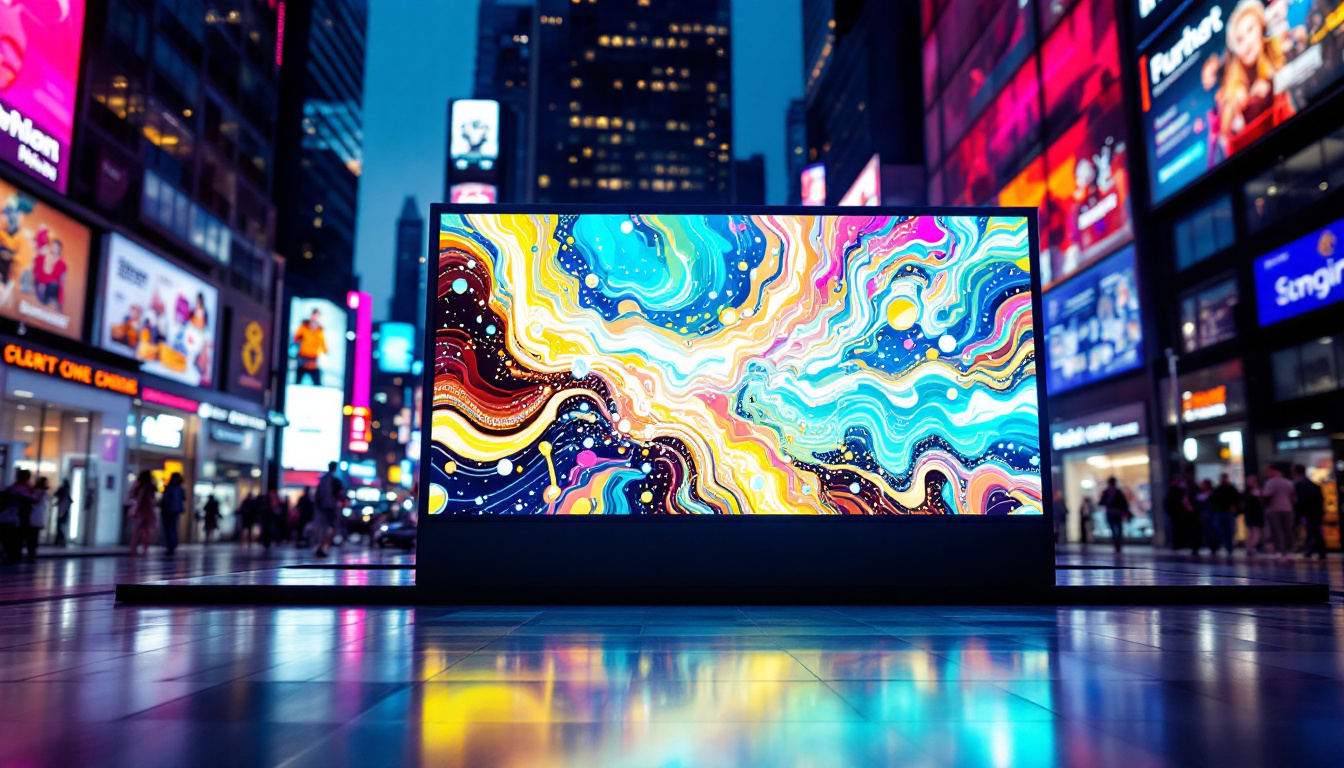In the realm of modern technology, displays play a crucial role in how information is conveyed and consumed. Among the various types of displays available, LCD (Liquid Crystal Display) and LED (Light Emitting Diode) technologies are among the most prominent. This article delves into the intricacies of these technologies, particularly focusing on how they are utilized in print applications and their significance in the digital age.
Understanding LCD Technology
LCD technology has revolutionized the way visual information is presented. It operates on the principle of manipulating light through liquid crystals, which are sandwiched between layers of glass. These displays are known for their ability to produce sharp images and vibrant colors, making them ideal for a wide range of applications, from televisions to smartphones.
How LCD Works
The core of an LCD display consists of liquid crystals that align in response to electric currents. When an electric field is applied, the crystals twist and allow varying amounts of light to pass through. This modulation of light creates the images that are seen on the screen. Typically, an LCD display is backlit, as the liquid crystals themselves do not emit light.
One of the most common configurations for LCDs is the Twisted Nematic (TN) display, which is favored for its fast response times. However, other types like In-Plane Switching (IPS) and Vertical Alignment (VA) offer better color reproduction and wider viewing angles, albeit at a higher cost. The choice of technology often depends on the intended use; for instance, IPS panels are preferred for graphic design and photography due to their superior color accuracy, while TN panels are often found in gaming monitors where speed is crucial.
Applications of LCD Technology
LCDs are widely used in various applications due to their versatility. In the print industry, LCD screens are often employed in digital printers for displaying settings and print previews. They provide users with a clear interface to adjust parameters and monitor print jobs in real-time. This integration of LCD technology not only enhances user experience but also streamlines workflow, allowing for quicker adjustments and improved efficiency in print production.
Moreover, LCD technology is also prevalent in advertising displays, where high-resolution screens can showcase vibrant images and videos. This capability makes them a popular choice for billboards and interactive kiosks, enhancing customer engagement. The dynamic nature of LCD advertising allows for real-time updates, enabling businesses to promote time-sensitive offers or events effectively. Additionally, the thin profile of LCD screens makes them easy to install in various environments, from retail spaces to public transportation hubs, further expanding their reach and impact.
In the realm of healthcare, LCD displays play a crucial role in medical imaging and monitoring devices. High-definition LCD screens are used in ultrasound machines, MRI scanners, and patient monitors, providing healthcare professionals with clear and precise visuals necessary for accurate diagnoses. The ability to display detailed images in real-time is vital in critical care settings, where every second counts. Furthermore, the durability and reliability of LCD technology ensure that these devices function effectively in demanding environments, contributing to better patient outcomes.
The Role of LED in Display Technology
LED technology has emerged as a powerful alternative to traditional display methods. While it is often associated with lighting, LEDs are also integral to modern display technologies, including LCDs. Understanding the role of LEDs in displays is essential for grasping how these systems function.
LED vs. LCD: The Key Differences
While both LCD and LED technologies are used in display systems, they are not mutually exclusive. In fact, LED technology is often used as a backlighting solution for LCD screens. The primary difference lies in how they produce light. LCDs rely on fluorescent lamps for backlighting, while LED displays utilize semiconductor diodes that emit light directly.
This distinction leads to several advantages for LED displays, including increased energy efficiency, thinner designs, and the ability to produce deeper blacks and more vibrant colors. As a result, LED displays have become increasingly popular in televisions, computer monitors, and mobile devices.
Advantages of LED Displays
LED displays offer numerous benefits that make them appealing to consumers and manufacturers alike. One of the most significant advantages is their energy efficiency. LED technology consumes less power compared to traditional backlighting methods, leading to lower electricity bills and a reduced carbon footprint.
Additionally, LED displays have a longer lifespan than their LCD counterparts. This durability translates to fewer replacements and lower maintenance costs over time. Furthermore, the ability to create ultra-thin displays has opened up new design possibilities, allowing for sleeker and more modern aesthetics in consumer electronics.
Moreover, the rapid advancement of LED technology has led to innovations such as OLED (Organic Light Emitting Diode) displays, which take the benefits of traditional LEDs even further. OLED displays eliminate the need for backlighting altogether, as each pixel generates its own light. This results in even deeper blacks and a wider color gamut, enhancing the viewing experience significantly. As these technologies continue to evolve, we can expect even more impressive developments in display quality and efficiency.
Another noteworthy aspect of LED displays is their versatility in various applications. From large outdoor billboards to small wearable devices, LEDs can be adapted to fit a wide range of environments and uses. This flexibility has made them a preferred choice in industries such as advertising, healthcare, and automotive, where high visibility and reliability are paramount. As LED technology continues to advance, it is likely that we will see even more innovative applications that leverage their unique properties, further solidifying their role in the future of display technology.
Combining LCD and LED Technologies
The integration of LCD and LED technologies has led to the development of advanced display systems that offer the best of both worlds. This combination is particularly evident in the realm of high-definition televisions and computer monitors, where LED backlighting enhances the performance of LCD panels.
Types of LED Backlighting
There are several methods of LED backlighting used in conjunction with LCD technology. The most common types include Edge-Lit LED and Full-Array LED backlighting. Edge-Lit LED displays feature LEDs positioned along the edges of the screen, allowing for a thinner profile. However, this design can sometimes result in uneven lighting and less impressive contrast ratios.
On the other hand, Full-Array LED backlighting involves a grid of LEDs placed directly behind the LCD panel. This configuration allows for localized dimming, which enhances contrast and provides deeper blacks. As a result, Full-Array LED displays are often preferred for high-end televisions and professional monitors.
Impact on Print Technology
The combination of LCD and LED technologies has also made significant strides in the print industry. Digital printers equipped with LCD screens and LED technology offer enhanced functionality and efficiency. Users can easily navigate through settings, monitor print quality, and make adjustments on-the-fly, all thanks to the intuitive interfaces provided by LCD displays.
Furthermore, LED curing technology in digital printing has transformed the way inks are cured, allowing for faster drying times and improved print quality. This innovation has made it possible to print on a wider variety of substrates, expanding the creative possibilities for designers and printers alike.
Additionally, the energy efficiency of LED technology contributes to a more sustainable printing process. By consuming less power than traditional curing methods, LED systems reduce the overall carbon footprint of printing operations. This shift not only benefits the environment but also lowers operational costs for businesses, making it a win-win situation in the competitive landscape of print technology.
Moreover, the integration of LCD displays in printers has also led to enhanced user experiences. Many modern printers now feature touch screens that allow users to preview their prints before finalizing them, ensuring that the output meets their expectations. This capability is particularly beneficial for photographers and graphic designers, who rely on precise color reproduction and detail in their work. The combination of these technologies continues to drive innovation, pushing the boundaries of what is possible in both display and print applications.
Future Trends in Display Technology
The landscape of display technology is continuously evolving, with advancements being made at a rapid pace. As consumer demands for higher resolution and better performance increase, manufacturers are exploring new technologies that push the boundaries of what is possible.
OLED and MicroLED Technologies
One of the most exciting developments in the display industry is the emergence of OLED (Organic Light Emitting Diode) technology. Unlike traditional LCDs, OLED displays do not require a backlight, as each pixel emits its own light. This leads to superior contrast ratios, vibrant colors, and the ability to achieve true blacks.
MicroLED is another promising technology that combines the benefits of LED and OLED. MicroLED displays consist of tiny individual LEDs that can create images without the need for a backlight. This technology offers the potential for even higher resolutions and greater energy efficiency, making it a contender for the future of display technology.
Smart Displays and Interactivity
As technology continues to advance, the integration of smart features into displays is becoming increasingly common. Smart displays equipped with touch capabilities allow for greater interactivity, enabling users to engage with content in new and innovative ways. This trend is particularly prominent in the advertising sector, where interactive displays can capture consumer attention and drive engagement.
Moreover, the rise of augmented reality (AR) and virtual reality (VR) applications is pushing the boundaries of display technology even further. These immersive experiences require high-resolution displays with fast response times, which will drive innovation in both LCD and LED technologies.
Conclusion
In summary, the interplay between LCD and LED technologies has significantly shaped the landscape of modern displays. Understanding these technologies is essential for navigating the evolving world of digital media and print applications. As advancements continue to emerge, consumers can expect even more innovative solutions that enhance the way information is presented and experienced.
Whether it’s through the sharp images produced by LCDs or the vibrant colors of LED displays, the future of display technology holds exciting possibilities that will undoubtedly influence various industries for years to come.
Explore Cutting-Edge LED Displays with LumenMatrix
As we embrace the future of display technology, LumenMatrix stands at the forefront, offering a spectrum of innovative LED display solutions tailored to meet your needs. From captivating Indoor and Outdoor LED Wall Displays to dynamic Vehicle and Sports LED Displays, our products are designed to elevate your brand’s presence and engage your audience. Experience the transformative power of LED technology with our LED Poster Displays, Floor LED Displays, and Custom LED solutions, all crafted to deliver unparalleled visual communication. Ready to revolutionize your visual experience? Check out LumenMatrix LED Display Solutions and discover how we can help you share your message with impact and clarity.

